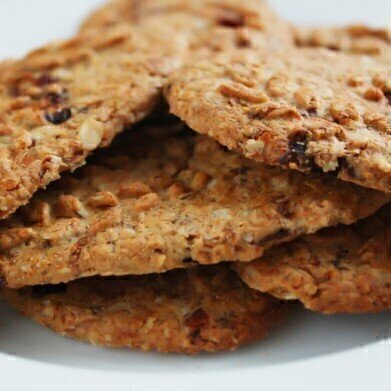GC-MS
Chromatography Finds a Problem with French Baby Biscuits
Mar 29 2017
A recent item in the newsletter FoodNavigator shows how vigilant consumers have to be when it comes to food safety. The newsletter reports on a survey carried out by independent campaign groups to analyse the levels of acrylamide in samples of toddler’s biscuits on sale in French shops. And the results could leave more than a sour taste in the mouths of babes if the findings are accurate.
Let’s look at acrylamide and see why it’s once again making the news.
Acrylamide in food— naturally present
Acrylamide — or using its IUPAC name prop-2-enamide — is a white, crystalline compound when it is produced in the lab. Its industrial uses include the manufacture of dyes, in the wastewater treatment industry and as polyacrylamide in gel electrophoresis. But around 2002 it was found somewhere else — food, and this has been creating newsprint ever since.
It is found in starchy foods that are cooked at high temperatures such as frying and baking. It is formed due to the reaction of sugars and amino acids in the food. The chemical process is known as the Maillard Reaction — and it is this reaction that gives our food it nice golden brown coloration when we cook it.
But not very good for us!
In 2015, the EFSA (European Food Safety Authority) issued an opinion based on an assessment of the available data. They concluded that:
Based on animal studies, EFSA confirms previous evaluations that acrylamide in food potentially increases the risk of developing cancer for consumers in all age groups.
Acrylamide is present in a wide range of foods, which means that it is very difficult for consumers following a ‘normal’ diet to avoid acrylamide. Some of the food groups that contribute to acrylamide exposure include crisps, biscuits, soft bread and coffee. The EFSA also suggest that home cooking choices can have a large impact on our exposure to acrylamide through our diet.
Animal studies have shown that acrylamide is genotoxic and carcinogenic — meaning that it can damage our DNA and cause cancer. There is also a suggestion that it can have harmful effects on the nervous system and adversely affect male reproduction. However, human studies are limited and the evidence associated with dietary exposure is inconsistent. But would you take a risk with your children — especially when they are considered to be the most susceptible group to the effects of acrylamide?
Acrylamide rich biscuits?
The article in Food Navigator reports on a study that showed some toddler’s biscuits contained acrylamide at levels above those recommended by the EU. A spokesman for the manufacturer’s suggested that they wanted to better understand the analysis that was carried out by the campaign groups.
The standard method to analyse acrylamide in food is gas chromatography with mass spectrometry — a method discussed in the article, Adding more Power to your GC-MS Analysis through Deconvolution.
Digital Edition
Chromatography Today - Buyers' Guide 2022
October 2023
In This Edition Modern & Practical Applications - Accelerating ADC Development with Mass Spectrometry - Implementing High-Resolution Ion Mobility into Peptide Mapping Workflows Chromatogr...
View all digital editions
Events
Sep 22 2024 Messina, Italy
Analytica Anacon India & IndiaLabExpo
Sep 26 2024 Hyderabad, India
Sep 29 2024 Singapore
Oct 06 2024 Liverpool, UK
Oct 09 2024 Birmingham, UK









-(300-x-250-mm)_1.jpg)




